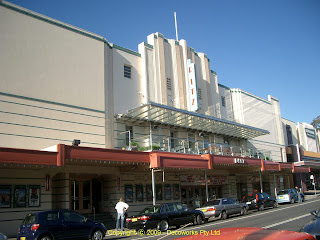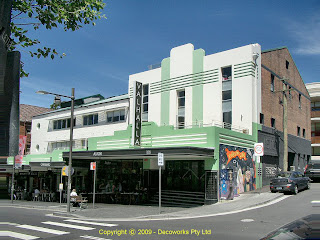Chateau Blanc

The Chateau Blanc is an old Art Deco theatre located at 57-61 South Street in Granville. It was rebuilt as the Granville Hoyts Castle cinema in 1947. It was designed by Cowper, Murphy & Associates and built by A.W. Edwards. Both the Castle cinema and the Crest Cinema in Blaxcell Street were built in the late 1940s utilising a Quonset design emerging from wartime construction methods. The new cinema opened 26 Dec. 1947 and closed Oct 1959. It was later used as a supermarket and a reception centre. All that is left today is the facade. Extensive additions have been made to make it into a large function centre known as the Grande Royale. Sources: Sydney Heritage Listings Parramatta Cinema History












